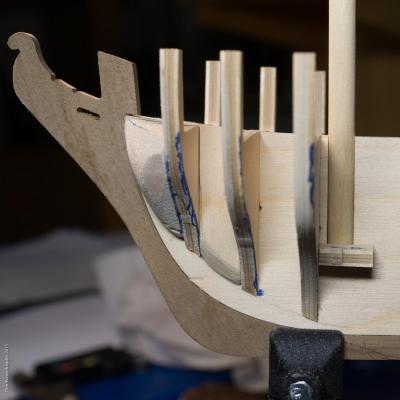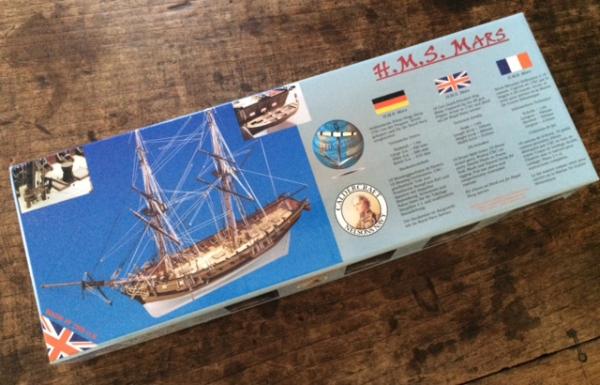-
Posts
61 -
Joined
-
Last visited
Content Type
Profiles
Forums
Gallery
Events
Everything posted by Aa-schipper
-
Rumours and news about Hercules and Mars in 1781 Visiting the libraries of the Scheepvaartmuseum in Amsterdam and the Maritiem Museum in Rotterdam, in the last couple of weeks I got some additional literature from the 19th and 20th centuries about the Hercules and Mars, but nothing in the way of contemporaneous sources. All authors relied (some explicitly, most rather implicitly) on the two reports: MacBride’s letter of December 1781 on his capturing the two privateers, and the ‘Justification’ that the Hogebooms published in 1783. But writing a decade or more (or even more than a century) ago, they did not have easy access to newspapers of the day, which now have been digitized to a large extent. What can we learn from them? Things seemed to be fine with the squadron of the largest privateers putting out, at the very first: one newspaper on 15 December 1781 sported the rumour, heard from fishermen, that Hercules and Mars had an English frigate of 36 pieces in tow. How wrong they were! Three days later the news broke that the reverse had actually happened. The newspapers and yearbooks in 1781 afterwards largely relied on the letter written by MacBride, and some also had been sent a letter by Pieter Hogeboom, captain of the Mars, who basically gave the version of the story as he had it put on record by the squadron’s officers in the 1783 ‘Justification’, stressing how valiantly they had behaved against the powerful Artois. The frigate was said to have 54 cannon, rather than the 44 (or 40?) that she actually had—an exaggeration that would make one a bit hesitant to believe the rest of Pieter’s account of heroism, like his assertion that the fight had lasted more than two hours (MacBride: half an hour), and especially Pieter’s call for a flag on a broomstick. A day after the true news became known, criticism began to be voiced in the papers: how could such a brave captain as Jan Hogeboom, who had taken 101(?) prizes in the Seven Years’ War under French flag, now, sailing for his own country, let the British have his two large, heavily-armed and beautiful ‘cutters’ at their first ever cruise? Hogeboom’s answer came only in 1783, as we saw before. Could the papers tell us more about the Hogebooms? The Hogebooms: privateers and merchantmen MacBride wrote that father Jan Hogeboom had been a French privateer in the previous war, and rather more successful than with his Hercules, as the Dutch newspaper confirmed—though we should not trust everything they printed, such as the 101 prizes. The only independent news I could find, was that in the Seven Year’s War, Jan had had his share of disappointment as well. A weekly from Leeuwarden, in the north of the Netherlands, reported that in August 1761 Jan Hogeboom, captain of the three-mast privateer ‘Maria Theresia’ (of four cannon and two swivel guns), was chased onto the island of Ameland by a British privateer of a single mast and 8 or 10 pieces. Hogeboom’s seventeen men fled into the dunes; the British took his ship and sailed away with it at high tide. [seventeen men for a three-mast ship? Surely there must have been more. Casualties in the chase?] In between wars, Jan seems to have been a simple merchant. At least, in 1772 a Jan Hogeboom in Flushing (Vlissingen; ‘our’ Jan’s home town, so he may well be the same person) advertised that he had oysters from London for sale. Pieter Hogeboom only made the newspapers shortly before the Mars adventure. In the shipping news of 1779, he was mentioned as captain of the ‘Waakzaamheid’ (‘Alert’), a merchantman sailing into Sète, Cadiz, Ostende and Flushing.
-
First steps: bulkheads fitted, some already glued in place to the false keel. To make sure that the mast clamps (in the bottom right corner of the picture) will fit, I also dry-fitted the masts (lightly sanded to make them fit into the slots in the false keel). As I was not sure whether the curve of planking would go well at the bows, I filled up the space before the first bulkhead with some rests of soft balsa wood I had lying around. Saw this trick on some other build log. More sanding to be done, but I guess it will be worth it.
-
Last days of a privateer — some history in lieu of building ‘Hoist another flag! Tie it to a broomstick, if need be!’ But nobody responded as many were wounded, and from the sloop of the enemy frigate Artois officers were making ready to board the badly damaged Mars. Such must have been the last heroic moments of Pieter Hogeboom on the 3rd of December, 1781, according to sworn declarations from several of the ship’s officers. They made these declarations in front of a notary more than a year later. Pieter Hogeboom and his father Jan, the captain of the brig Hercules and commander of the two-ship privateering ‘fleet’ apparently needed such a defence of their loss of two beautiful, new, large privateers (I suppose once they all got back from imprisonment in England). Dutch public opinion had had high expectations ‘that they would make the proud Brit shudder’ and their loss during their very first cruise was much talked about. The Hogebooms were accused of carelessness, cowardice, or even collaboration with the enemy. After all, theirs had been the largest privateers that went to sea against the British in 1781, with 140 (Mars) and even 162 (Hercules) heads, while other Dutch privateers counted 13 to 85 men. The short of the story is known to all builders of the ‘HMS Mars’ model: she was taken on the North Sea by the frigate Artois. Its captain, MacBride, gained fame throughout England for his letter, reporting that he had ‘effectively winged’ one ship (Hercules), then set about taking the other (Mars) as well, declaring them ‘perfectly new and alike … the completest privateers I ever saw; cost upwards of 20,000 £’. His words regarding the Mars were that she ‘struck on our coming up’—no words about hoisting the flag a second time after it had been shot down rather than voluntarily taken down, let alone about wanting to hoist it a third time on a broomstick, as the Martians told the notary. Last days of privateering in Holland The Dutch Republic stimulated privateering in 1781, because its navy was very weak at the beginning of the Fourth Anglo-Dutch war and building of new men-of-war went slowly. However, few merchants in the Netherlands were interested: most rather sold their ships to neutral countries and continued to earn money without engaging in the ‘risky alternative’ of privateering. After all, the British were prepared, having been at war with Americans and French already, protecting merchantmen through convoys with Navy escorts. Historians counted 29 privateers in the 1780-1783 war, a number much lower than earlier in the century. Sixteen of the 29 privateers were lost, all without taking any prize—Mars and Hercules were not the only failures! Other privateers took some 61 British merchantmen and ‘ransomed’ 40 more. Ransoming means that they settled for a (lower) sum of money rather than physically seizing the ship and going through the tedious procedure leading to auctioning the ship and its contents by the one of the five Dutch Admiralties. Sources If you're interested in the sources of this story, just let me know—I did not want to clutter the text with notes; this is a build log, not a scientific journal.
-
Caldercraft is supposed to be one of the best quality brands around. So I have on my table one of the best kits! My ambition is to make out of this 3 kg bundle of different kinds of wood, the bag full of fittings, the brass details and other small elements the Dutch brig Mars. The “H.M.S. Mars” kit was made after plans of the H.M.S. Orestes, a British Royal Navy brig that began its life as a Dutch privateer called Mars. In fact, as others have noted, there never was an “H.M.S. Mars”. Being a Dutchman myself, I’d like to rewrite history a little, or recreate history: what did the ship look like that was lost in the encounter with the frigate H.M.S. Artois on 3 December 1781? In the process, I hope to find out a lot more about the Mars, its sister ship Hercules, and about Dutch privateering in the fourth Anglo-Dutch war. The focus will be, of course, on the model itself: what did the Mars look like just before 3 December 1781? What were her colours, how was the rigging, with what cannons was she fitted out, etc.? Count on this becoming a ten-year plan… I’m not in a hurry, and I am quite busy with my job (an office job, not related with wood-working at all), with other hobbies (photography among them—build pictures will be better than the one included in this post) and sports (on land, I'm not a sailor), so I’ll work on this project on and off, not in a continuous fashion. As for my model building experience: after having built a number of plastic kits when I was in my teens (Airfix models of Victory, Wasa, and Cutty Sark), I picked up ship models a couple of decades later when I visited the reconstructed VOC return ship Batavia in Lelystad and found there was a (plastic again) model available. After completing that one, I turned to wooden models and first tried my skills on the Sperwer by Billing Boats. There is a picture of my Sperwer in the completed builds gallery. And now there is the kit that has to become the Mars… On opening the box, others have commented about the quality of the wooden parts, etc. I am not so skilled that I could comment on their quality — it all looks pretty solid to me! I expect to use what is available in the kit, though I’ll be willing to try making adjustments and do some building from scratch to get closer to the historical Mars. I did notice, though, that the booklet with building instructions is not very long or detailed, but I hope that the seven large sheets with drawings will make up for that. Besides, there is the literature. On my bookshelf there are, amongst others: · Julier, Keith. (2004). The New Period Ship Handbook. Poole, Dorset (UK): Special Interest Model Books. [With a chapter on building H.M.S. Mars] · Dressel, Donald. (1988). Planking Techniques for Model Ship Builders. New York etc.: TAB Books. [Planking Sperwer I found the most difficult part; it took me a lot of time to admit having made errors there, but I finished the single-planked model nevertheless.] · Petersson, Lennarth. (2000). Rigging Period Ship Models. London: Chatham Publishing. [based on a 1785 British frigate: the correct period for Mars] · Petrejus, E.W. (1974). Nederlandse zeilschepen in de negentiende eeuw. [Dutch sailing ships in the nineteenth century]. Bussum: Unieboek. [Petrejus related that Dutch rigging in the early 1800's differed from the British way of doing it.] And finally, I hope I can benefit from the experiences of all you great folks at this forum. To translate a fitting Dutch proverb literally: We’ll see where this ship runs aground…
-

The Dutch Boeier De Sperwer- The 'James Bond Yacht'
Aa-schipper replied to Salty Sea Dog's topic in Nautical/Naval History
Hi all, Searching my old photo collection, I found some details of 'Sperwer' that may add to your (and my) modelling of the ship. The 25 pictures are at http://www.flickr.com/photos/dfw-photo/sets/72157639437576296/. Enjoy! -

The Dutch Boeier De Sperwer- The 'James Bond Yacht'
Aa-schipper replied to Salty Sea Dog's topic in Nautical/Naval History
Greetings, Wefalck! Zinc-plated iron—I did not think of that option. I'll look up my pictures over the weekend to see if the look of the metal bands might be zinc-like. Will post, of course, if I get any clues... -

The Dutch Boeier De Sperwer- The 'James Bond Yacht'
Aa-schipper replied to Salty Sea Dog's topic in Nautical/Naval History
Thank you, Buck, for the advice on the Sperwer's metal. Some years ago, when I started building, I have been to the museum where the Sperwer lies, and could not understand the metal then, too. There was no-one from the museum around to ask, at the time. You must be right: the doors to the cabin have fancy metalwork that must be wrought iron. Iron was the usual material for such uses. But iron does not go well with water, so the bands around the leeboards and rudder will probably be brass, which has been heavily discoloured, to the point of being almost as black as iron. It seems a bit late for me to start a build log: my progress has been very slow but by now most of the building of the hull has been done and I'm starting to put on the finishing touches. And more importantly: I'm starting to think about a second ship model, to make a better build (better quality kit and better quality execution ). If anyone has questions about Dutch ships, I'll be happy to give them a try, even though I'm a landlubber and an absoute beginner in wooden models. -

The Dutch Boeier De Sperwer- The 'James Bond Yacht'
Aa-schipper replied to Salty Sea Dog's topic in Nautical/Naval History
And as a contribution to the visuals on the Sperwer, I came across a short film item on sailing historic ships in Enkhuizen, which at about ¾ of the 1:24 minute movie shows the Sperwer--vaguely (not fit for enlarging to the full computer screen): http://eeuwvandestad.nl/archives/1603. Hope you like it! -

The Dutch Boeier De Sperwer- The 'James Bond Yacht'
Aa-schipper replied to Salty Sea Dog's topic in Nautical/Naval History
Thanks for the great collection of pictures! I'm building the Billings kit model (my 1st build) but want to improve a bit on it (to draw attention away from all the beginner's mistakes I'm making). One of the things I cannot see from the pictures is which types of metal are used for: * the metal bands around the rudder and the leeboards; * the fancy metal on the doors to the cabin. Should I colour them as iron, as brass, or ... ? Another concern I have is the length of the mast: the 1:23 model drawing shows a mast that in reality would be 9.08m tall above the deck. From a drawing in Vermeer's 'De boeier' I concluded that the mast was 10m above deck. The actual wooden model has a mast that falls short of the kit's drawing by .5cm (in reality: 11.5cm). I'm confused... What length should I build up in my model? Thanks in advance for any help you can give!
About us
Modelshipworld - Advancing Ship Modeling through Research
SSL Secured
Your security is important for us so this Website is SSL-Secured
NRG Mailing Address
Nautical Research Guild
237 South Lincoln Street
Westmont IL, 60559-1917
Model Ship World ® and the MSW logo are Registered Trademarks, and belong to the Nautical Research Guild (United States Patent and Trademark Office: No. 6,929,264 & No. 6,929,274, registered Dec. 20, 2022)
Helpful Links
About the NRG
If you enjoy building ship models that are historically accurate as well as beautiful, then The Nautical Research Guild (NRG) is just right for you.
The Guild is a non-profit educational organization whose mission is to “Advance Ship Modeling Through Research”. We provide support to our members in their efforts to raise the quality of their model ships.
The Nautical Research Guild has published our world-renowned quarterly magazine, The Nautical Research Journal, since 1955. The pages of the Journal are full of articles by accomplished ship modelers who show you how they create those exquisite details on their models, and by maritime historians who show you the correct details to build. The Journal is available in both print and digital editions. Go to the NRG web site (www.thenrg.org) to download a complimentary digital copy of the Journal. The NRG also publishes plan sets, books and compilations of back issues of the Journal and the former Ships in Scale and Model Ship Builder magazines.




